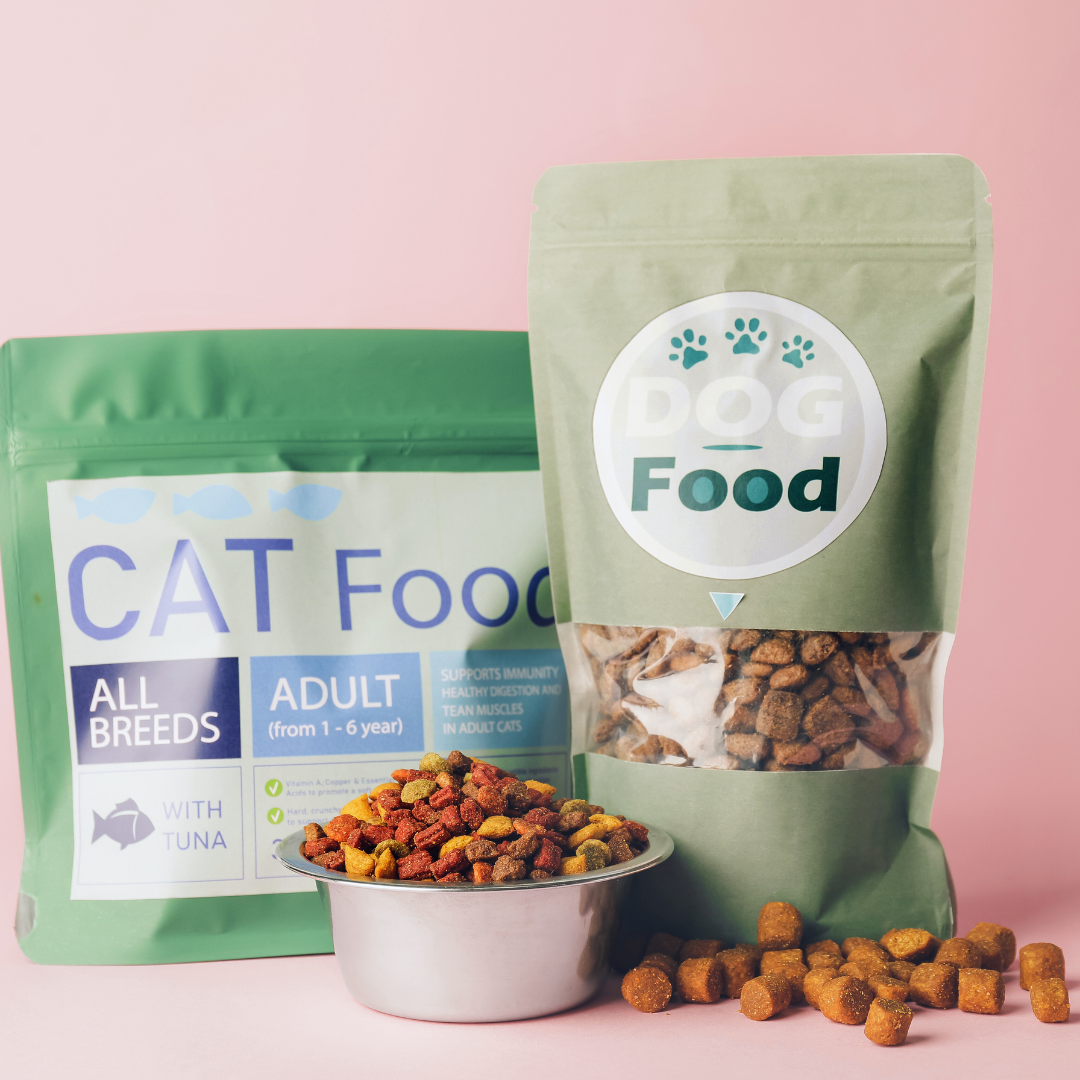
Tips for Choosing the Perfect Pet Food: Essential Guide for Pet Owners
Choosing the right pet food is crucial for a pet’s health and happiness. Understanding the nutritional needs of the specific type of pet and age group is essential when selecting food. With so many options available, it can be overwhelming, but making informed choices will lead to better long-term outcomes for pets.
Reading labels is an important step in this process. Key ingredients, sourcing, and dietary requirements can vary significantly. Owners should prioritize high-quality proteins and essential nutrients, ensuring the food meets the unique needs of their pet.
Moreover, consulting with a veterinarian can provide tailored recommendations. Each pet has its own unique dietary needs based on factors like breed, age, and health conditions. Keeping these considerations in mind will help ensure that pets receive the best possible nutrition.
Understanding Your Pet’s Nutritional Needs
Proper pet nutrition is crucial for health, energy, and longevity. Assessing a pet’s individual requirements involves considering age, activity levels, and any specific dietary needs.
Assessing Your Pet’s Age and Life Stage
Different life stages, such as puppy or kitten, adult, and senior, significantly influence nutritional needs. Puppies and kittens require diets rich in proteins and fats to support rapid growth and development. Adult pets need a balanced diet to maintain their health and energy levels.
Senior pets may benefit from diets lower in calories but enriched with specific nutrients to combat issues like heart disease and kidney disease. Monitor age-related changes, as older pets may need adjustments to maintain a healthy weight and support their immune system.
Evaluating Activity Level and Breed Considerations
A pet’s activity level is a critical factor in determining their caloric needs. Active pets, such as working dogs or those that engage in regular play, require more energy-dense food compared to sedentary pets.
Breed also plays a significant role. Larger breeds may have specific nutritional requirements to prevent issues like obesity, while smaller breeds might need higher energy food in smaller portions. For example, family-oriented breeds like the Bernese Mountain Dog have distinct needs in terms of nutrition, grooming, and responsible breeding—more information on caring for and adopting Bernese puppies can be found at Mountain Dog Companion. Tailoring diets according to these factors ensures optimal health.
Identifying Special Dietary Requirements
Some pets may have special dietary needs due to health concerns or allergies. For example, pets with obesity may require a calorie-controlled diet to promote weight loss.
Conditions like kidney disease or heart disease necessitate specific dietary considerations, often requiring lower protein or sodium content. Additionally, certain breeds are predisposed to allergies, prompting the need for hypoallergenic diets that exclude common allergens. Understanding these requirements is vital for maintaining overall health.
Evaluating Pet Food Quality
Understanding pet food quality is essential for pet owners looking to provide the best nutrition. Key considerations include reading labels, analyzing guaranteed nutritional content, recognizing quality ingredients, and knowing industry standards.
Decoding Pet Food Labels and Ingredient Lists
Pet food labels provide vital information. The ingredient list appears in descending order of weight, which means the first few items are the most critical. High-quality pet food often features whole meats, grains, and vegetables at the forefront.
Look for specific sources like “chicken” rather than vague terms like “meat meal.” Additionally, be cautious of fillers and artificial additives, as they often diminish food quality. Comparing ingredient lists can help in selecting the most nutritious options.
Understanding Guaranteed Analysis and Feeding Trials
The guaranteed analysis offers insights into nutrient content. This section indicates the minimum and maximum percentages of crude protein, fat, fiber, and moisture. High-quality pet food typically contains at least 20% protein; however, this can vary based on the pet’s age and lifestyle.
Feeding trials assess food performance through real-life testing with pets. AAFCO sets guidelines for these trials, ensuring standardization. Products that pass feeding trials may indicate higher nutritional adequacy, giving owners peace of mind about their choices.
Recognizing Quality Ingredients in Pet Food
Quality ingredients matter significantly in pet food products. High-quality pet foods often incorporate whole foods without extensive processing. Look for recognizable ingredients such as whole meats, vegetables, and fruits.
Limited-ingredient diets can benefit pets with allergies or sensitivities. Identifying natural preservatives, like mixed tocopherols, is also essential, as synthetic preservatives can negatively impact long-term health. Brands like Purina offer various options, including prescription diets catering to specific health needs.
The Role of AAFCO Standards
The Association of American Feed Control Officials (AAFCO) establishes guidelines for pet food products. These standards ensure foods provide complete nutrition according to specific life stages.
Pet foods labeled as “complete and balanced” must meet AAFCO’s nutrient profiles. Owners should look for this validation on packaging to ensure adherence to established nutritional requirements. Compliance with AAFCO standards is crucial for all high-quality pet food offerings in the market.
Selecting the Optimal Diet for Your Pet
Choosing the right diet for a pet involves several crucial factors. It is essential to consider the type of food, nutritional components, and the quality of ingredients. Understanding these elements can greatly impact a pet’s overall health and well-being.
Choosing Between Dry, Wet, and Raw Diets
Dry food, known as kibble, is convenient and can help maintain dental health. It typically offers balanced nutrition and is shelf-stable. However, pets may require additional hydration when consuming dry food.
Wet food provides higher moisture content, which is beneficial for pets that are not good drinkers. It also tends to be more palatable for picky eaters.
Raw diets focus on uncooked, unprocessed ingredients, mirroring a pet’s natural eating habits. This option often requires careful preparation and handling to ensure food safety. Owners must choose a suitable diet based on the pet’s needs and preferences.
Considering Protein, Carbohydrates, and Fats
The balance of macronutrients is vital for pet nutrition. Proteins are essential for muscle health and tissue repair. Pets generally need high-quality sources of protein, such as real meat.
Carbohydrates provide energy, but they should not be the main component of the diet. Too many carbs can lead to weight issues.
Fats are also crucial as they support healthy skin and stimulate nutrient absorption. Omega fatty acids are particularly beneficial for maintaining a shiny coat. A well-rounded diet will contain all three macronutrients in proper proportions to promote optimal health.
Evaluating the Role of Real Meat, Vegetables, and Fruits
Real meat should be the primary ingredient in any pet food, as it provides essential amino acids. It’s important to look for meat listed as the first ingredient.
Vegetables add fiber, vitamins, and minerals, contributing to digestive health. Common options include sweet potatoes, peas, and carrots. They can aid in maintaining a healthy weight.
Fruits can serve as nutritious treats, offering antioxidants and additional nutrients. Apples, blueberries, and pumpkin can enhance a pet’s diet. Choosing high-quality ingredients ensures pets receive the balanced nutrition needed for vitality.
Consulting with Your Veterinarian
Consulting with a veterinarian is essential when selecting the right pet food. They provide valuable insights into your pet’s specific dietary needs.
Key considerations:
- Nutritional Requirements: Each pet has unique nutritional requirements based on age, breed, and health conditions. A veterinarian can recommend appropriate formulations.
- Prescription Diets: If a pet has specific health issues, a veterinarian may suggest prescription diets. These foods cater to medical needs, such as allergies or kidney disease.
Recommendations for pet owners:
- Schedule Regular Check-ups: Regular veterinary visits help assess a pet’s health and nutritional needs.
- Discuss Concerns: Owners should voice any concerns about their pet’s eating habits or health. This information assists the veterinarian in making informed recommendations.
- Follow Guidelines: Veterinarians often provide guidelines for portion sizes based on the pet’s weight and activity level, ensuring properly balanced meals.
For dog owners, they should inquire about what constitutes the best dog food. Options may include dry, wet, or specialty foods.
Cat owners should also seek advice on suitable food types tailored for feline needs.
Veterinarians are a critical resource in navigating pet food choices, making sure that pets receive optimal nutrition tailored to their unique circumstances.
You May Also Like

The Rise of Virtual Reality: Future Prospects for Entertainment and Business
November 9, 2024
What is EEAT: Understanding Expertise, Authoritativeness, and Trustworthiness in Content Quality
May 25, 2024


